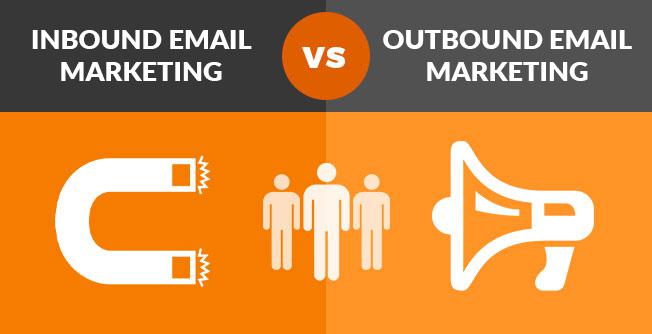
Have you ever opened your email to find that you received a message from a company or person you’ve never heard of before, offering you a product or service that does not interest you in any way? Of course, you have! We all have. That my dear readers is email marketing in motion, outbound email marketing to be exact and the fact that that random promotional email does not interest you in any way means that someone did not plan their email marketing strategy well. And to be honest, a lot of marketers struggle in this aspect. Now you might not think much about that random email you just received so we want to discuss with you just how powerful email marketing actually is if done right.
In this blog series (The power of email marketing), we will be discussing the entire spectrum of email marketing and show you just why you should implement it in your marketing efforts. In part 1, we will be discussing Outbound vs Inbound email marketing, what differentiates them, their strengths and weaknesses, and how to know what strategy will work for you. Let's begin!
Outbound Email Marketing – What is it and does it work?
Outbound Email Marketing is reaching out directly to people (via email) who have never heard of your company before and did not subscribe to receiving notifications and offers from you. Usually, the lists of addresses that receive these emails are purchased or have been generated by the company that sends the emails. But don’t get the wrong idea, It’s not your typical cold emailing where you blast the same message out to thousands of random people in a list. It’s much more sophisticated and strategic than that. With the right tactics and tools, outbound email marketing can be very effective at increasing your brand’s visibility and generating leads for your business.
Outbound email marketing is all about reaching out to a highly targeted list of people who can potentially be your clients. If done correctly, this is one of the most cost-effective ways to help in brand awareness.
Strengths
- Gets your message in front of as many people of your choice and you control the means by which they interact with that message. Brand awareness!
- Provides certainty that your prospect has seen or interacted with your messaging in some way (how much they have engaged with it is a different story).
- Has the highest ROI of any digital channel for B2B companies because the sales funnel is far shorter and everything is measurable.
Weaknesses
- Cold contacting people in any format frustrates people and can yield negative replies and results. Perhaps one of the biggest problems for outbound email marketing is getting your emails marked as spam resulting in a bad reputation score.
- Quality of lists and leads greatly impacts the response you get, and sourcing good quality leads yourself or in-house can be time-consuming and expensive.
- Approaching a prospect who isn’t sales-ready can mean a missed opportunity?—?which is very difficult to accurately measure from the outside of a company.
Inbound Email Marketing – What’s the difference?
The main difference between inbound and outbound is Inbound email marketing is you send emails (such as promotional emails, updates, announcements, newsletters, and the like) to people who signed up to receive them. These are people who may already be your customers, people who may have expressed interest in your product or service before, or are just looking to receive information regarding your service/product. These prospects may have given their contact information to you through lead capture forms on your website or as part of a purchase or subscription to your service
Strengths
- Do not frustrate or irritate your prospect, indeed the mantra of Inbound marketers is to ‘delight’ prospects.
- Inbound messaging provides a platform for two-way communication?—?encouraging prospects to actively engage with your messaging.
- Draws people in?—?meaning the leads you collect via Inbound are more receptive to messaging as they have already signaled interest and intent.
Weaknesses
- You are limited to your subscriber list. Most companies don’t have a large opt-in list and therefore struggle with generating new leads with this strategy.
- Requires consistent time investment to produce content of a high enough quality to build this highly sought-after thought leadership.
- Tracking return on investment can be difficult even with web analytics as drawing an accurate picture of behavior from the collected data is a skill-set in itself and can never be fully accurate.
What strategy do I choose?
A lot of marketers mistakenly think that when strategizing for an email marketing campaign, it can only be one way; either go outbound or inbound, but? fundamentally elements of both work and can be combined to drive better results. While outbound is the most common category that email marketing falls into, it can also be an inbound initiative. As we just discussed, one of the primary ways inbound email marketing differs from outbound email marketing is having contacts who have opted-in to receive your emails.
Recipients of inbound marketing emails will still have the ability to make changes to their subscriptions, or opt-out of the inbound campaign. Outbound email marketing, on the other hand, is sent to those individuals who have not signed up to receive it and may not have even interacted with your company previously. You don’t need to commit to one strategy, in fact, to drive results from either, you need elements of the other for you to be really successful in the email marketing landscape!
In the next episode, we will be discussing how to effectively start and launch an email marketing campaign (both inbound or outbound) and what tools you need to get started. See you then!
- Log in to post comments

